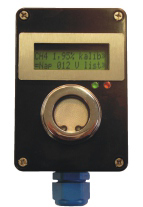Mine workers most often die because of methane explosions. During coal mining, gas accumulates in a certain part of the mine. Methane concentration gradually grows and so does the risk of explosion which can cause a major accident involving numerous casualties.
Methane is highly inflammable and its presence in the mine atmosphere is especially dangerous due to the fact that accumulation of gas often results in a series of explosions. The first explosion raises dust from the mine walls while the second one occurs if the fire that has provoked ignition has not gone out. It is the second explosion which is most destructive: it often causes casualties among not only miners but also mine rescue service team members.
Explosiveness of Mines – a Topical Problem that Needs to Be Solved
It is notable that almost all Russian mines are dangerous in terms of coal dust explosiveness, with the exception of 10 mines of Rostov Oblast. In 2017, the State Register of Hazardous Production Facilities included 97 mines of which 60 are being used for coal mining.
Fatal accumulation of methane in operating mines can be caused by negligence and low qualification of the personnel (including engineers responsible for safety) as well as deliberate disregard of rules of mining in the pursuit of larger coal production output.мертельно опасное скопление метана в действующих шахтах может быть следствием халатности и низкой квалификации персонала (в том числе инженеров, отвечающих за безопасность), а также умышленным пренебрежением правилами выработки в погоне за объемами добычи угля.
Let Us Consider Three Methods for Reducing Explosiveness of Mines:
Рассмотрим три метода снижения взрывоопасности горной выработки:
1. Observance of safety standards. Investigations of major accidents revealed serious violations of safety rules in many mines: in some cases even engineering team members were not familiar with accident prevention and response instructions. The first step to provision of safety is knowledge of and strict adherence to the production technology by all personnel.
2. Degasation. Safety of mines can be increased significantly by mans of preliminary degasation. The only serious limitation is significant expenditures for a period of 5-7 years required to implement the technology. Preliminary degasation can decrease the methane content in the rock by 50-60%.
However, even degasation cannot properly meet the challenge of explosiveness according to Aleksandr Myaskov, Director of Mining Institute:
«Unfortunately, preliminary degasation is not used in our country at all. There are only two facilities in the territory of the CIS: in Kazkhstan. Highly efficient current degasation (under the influence of cleaning activities as a result of coal-and-rock massif discharge) does not solve the problem of methane safety completely because in most cases the sources of gas emission fall behind mining works and the retardation increases with acceleration of works».
3. Aerogas control in mines. The use of mine gas analyzers allows monitoring the atmosphere in enclosed mines continuously to detect any dangerous concentrations of methane and take measures for its evacuation in good time.
Automatic Gas Control in Mines (AGC): Gas Analyzers and Their Types
Mine atmosphere monitoring is one of the main and indispensable conditions for provision of personnel safety in mines involving methane emissions. Retrofitting of mines according to up-to-date standards involves compulsory fitting of automatic gas protection systems in enclosed mines. Those centralized systems are based on mine methane control equipment.
Gas analyzers monitor the gas environment continuously detecting presence and concentration of methane, oxygen, carbon monoxide and carbon dioxide gases. If any potentially dangerous conditions occur, the system alerts personnel automatically and allows taking measures in good time to prevent an accident.
The devices can be classified into three types:
 |
personal; |
 |
portable; |
 |
fixed. |
The first two types of gas analyzers are characterized by their mobility and small size. A portable explosion-proof gas analyzer is designed for people working in hazardous areas. It has display presentation and a signal warning the user about danger.
Data transmitted by the portable gas analyzer are processed by an aerogas control system: the system operator can see the condition of the mine atmosphere in all areas where people are working. Data are continuously transmitted from gas analyzers to the aerogas control system. The aerogas situation is displayed on the operator’s automated workstation by means of specialized software both in text and table and in graphic forms on underground mine plans. Concentration of gases such as methane, carbon monoxide and dioxide gases and oxygen are monitored.

Explosion-proof fixed gas analyzers are distinguished by their increased operational accuracy and reliability and are bigger than portable devices. The device alerts about danger and transmits information to a computer providing final monitoring.
Gas analyzers of any type are explosion-proof: they are absolutely safe for operating in explosion hazard areas. Gas analyzer bodies have dust and moisture protection sufficient to ensure their normal operation in mines.
Strengthening of control of enclosed mines and strict compliance with safety standards are indispensable conditions for normal operation of explosion hazardous mines. Neglect of personnel safety for the sake of production increase is unacceptable. Gas control systems based on gas analyzers are the simplest and cheapest way to prevent accidents involving loss of life.




